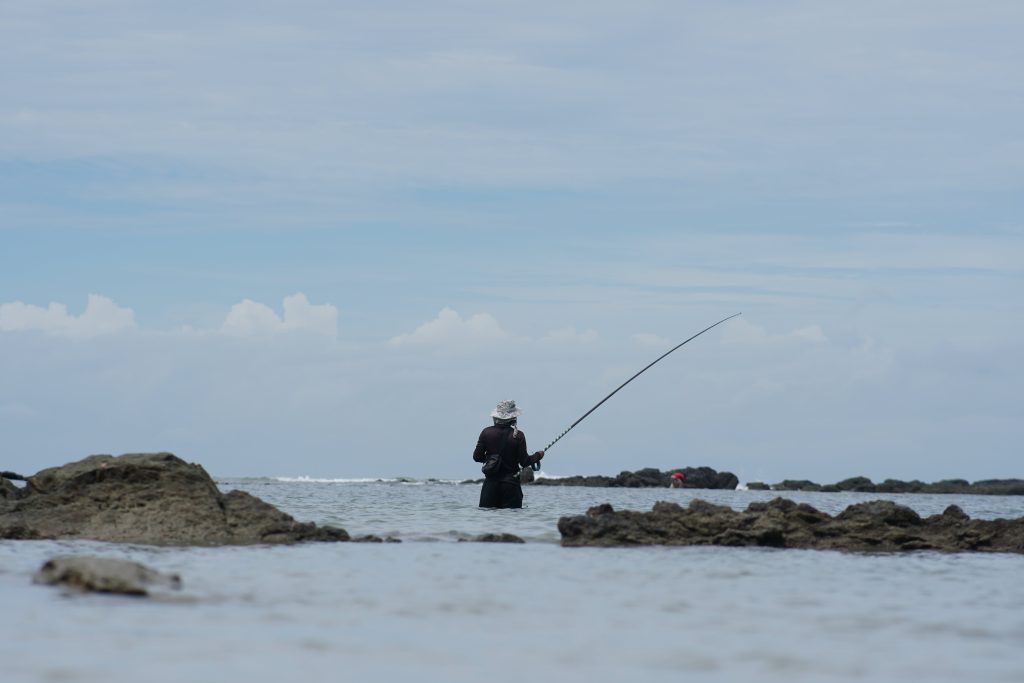Ever wondered how barometric pressure affects your fishing trip? Understanding the barometric pressure is an important factor in catching fish, as it is influenced by weather conditions and the atmosphere. From high to low pressure systems, each important factor plays a crucial role in fish behavior.
With the right barometric conditions and high pressure, you could reel in an impressive haul. But what exactly is the ideal barometric pressure for successful fishing expeditions using a barometer?
Let’s dive into this essential aspect of angling and uncover the secrets behind leveraging barometric pressure, weather conditions, bass, rain, and sea surface to enhance your fishing experiences.
Table of Contents
ToggleBarometric Pressure Basics
Impact on Fish Behavior
Barometric pressure and sea surface effect fish behavior, ultimately affecting fishing trips. Changes in barometric pressure can either stimulate or suppress bass feeding activity, making it crucial for anglers to understand its impact on the surface. For example, low barometric readings and pressure changes may indicate stormy weather, causing fish to feed more actively before the storm hits.
Anglers can monitor changes in atmospheric pressure and barometric reading using various techniques. One method involves utilizing a traditional barometer to measure the barometric reading of air pressure at a specific location.
Regularly checking weather reports for updated barometric readings and pressure changes can provide valuable insights into potential fishing conditions. Moreover, smartphone apps and online resources offer convenient ways to track real-time changes in barometric pressure, enabling anglers to make informed decisions about their fishing expeditions.
Weather Conditions
Different weather conditions such as temperature, humidity, and wind play pivotal roles in determining varying barometric pressures that directly impact fishing outcomes.
For instance, high temperatures often lead to lower barometric pressures due to thermal expansion of air molecules.
Understanding these relationships allows anglers to anticipate how changing weather patterns might influence the local barometer, consequently affecting fish behavior and air pressure.
Fish Behavior and Pressure

Feeding Patterns
Barometric pressure significantly impacts fish behavior, particularly their feeding patterns. When the barometric pressure is stable or falling, fish tend to be more active, making it an ideal time for fishing.
Conversely, rising barometric pressure often causes fish to become less active and harder to catch. For example, during a period of low-pressure system like a stormy day, the chances of catching fish are higher due to their increased activity.
High Pressure Effects High barometric pressure usually results in clear skies and calm conditions. Consequently, this can make fish less active and harder to catch. Therefore, when facing high-pressure systems, anglers need to adjust their fishing techniques accordingly in order to maximize success.
Low Pressure Effects Conversely, low barometric pressure is typically associated with cloudy or stormy weather conditions. During these periods of low-pressure systems, fish are generally more active and thus provide better opportunities for successful fishing trips.
Optimal Barometric Pressure
Ideal Ranges
The ideal barometric pressure for fishing is not a one-size-fits-all number. It varies based on the location and the type of fish you are targeting. Generally, some anglers find that stable or slightly falling barometric pressure leads to better catches.
For example, if you’re fishing for bass in a freshwater lake, a stable barometric pressure around 30 inches of mercury might be ideal. On the other hand, if you’re deep-sea fishing for tuna, a slightly falling barometric pressure around 29 inches of mercury could be more effective.
It’s crucial to experiment with different ranges to determine what works best for your specific fishing spot. Keep detailed records of your catches alongside the corresponding barometric pressure readings. Over time, patterns may emerge that help you identify the most productive conditions.
Pressure Trends
Instead of fixating solely on specific readings, it’s essential to pay attention to trends in barometric pressure when planning your fishing trips. Rapidly changing barometric pressure can impact fish behavior differently than steady conditions do.
For instance, if there’s an abrupt drop in atmospheric pressure due to an incoming storm system, it could trigger increased feeding activity among certain fish species.
High vs. Low Pressure
Best Fishing Conditions
Good barometric pressure for fishing is crucial when combined with favorable weather conditions. Factors like cloud cover, wind direction, and water temperature also influence fishing success.
For example, a high barometric pressure, clear skies, light winds, and stable temperatures are ideal conditions for successful fishing. On the other hand, low barometric pressure, overcast skies, strong winds, and unstable temperatures can make fish less active.
Consider the overall conditions to maximize your chances of a successful fishing trip. When the barometric pressure is within the optimal range and combined with suitable weather elements, it creates an environment where fish are more likely to be feeding actively.
Weather Transitions
Fish may exhibit different behaviors during weather transitions. For instance, when transitioning from high to low-pressure systems or vice versa, fish may become more active due to changes in atmospheric pressure.
Be prepared to adapt your fishing techniques when transitioning from one weather pattern to another. This means being ready to change bait types or adjust depths based on how fish respond as the barometric pressure shifts.
Barometric Influence on Timing
Fishing Times
Different fish species have specific times of the day or night when they are more active. For example, some species might be more active during early morning or late afternoon. Experimenting with different fishing times can help you identify the most productive periods for catching fish.
For instance, if you’re targeting bass, try fishing during low light conditions such as dawn and dusk. These periods coincide with changes in barometric pressure, making them ideal for successful catches. On the other hand, catfish tend to be more active at night due to their nocturnal feeding habits.
It’s essential to keep a record of your fishing trips and note the time of day when you had the most success. Over time, patterns may emerge that can help you plan future outings more effectively based on both time and barometric pressure variations.
Daily Pressure Fluctuations
Pay close attention to daily fluctuations in barometric pressure at your favorite fishing spots. Minor changes throughout the day can significantly impact fish behavior and feeding patterns.
For example, if there’s a sudden drop in barometric pressure during midday hours, it could trigger increased fish activity as they sense an impending weather change. This is often an excellent opportunity to cast your line and take advantage of their heightened feeding behavior.
On days with stable high-pressure systems, consider focusing on deep water structures where fish might seek refuge from unfavorable surface conditions caused by high atmospheric pressure.
Environmental Factors
Key Elements
Barometric pressure is just one of several factors that influence fishing success. Water temperature, oxygen levels, and bait availability also play important roles. Consider all key elements when planning your fishing trips.
When you’re out on the water, it’s essential to pay attention to these important factors, not just barometric pressure. For example, if the water temperature is too warm or too cold for the type of fish you’re trying to catch, they may be less active and harder to find.
Consider the oxygen levels in the water. Fish need a certain amount of dissolved oxygen to survive, so low oxygen levels can lead to decreased fish activity and make them more challenging to catch.
Lastly, bait availability is crucial. If there’s an abundance of natural prey for the fish in their environment, they may be less likely to go after your artificial lures or baits.
Air Pressure Nuances
Small variations in barometric pressure can have significant effects on fish behavior. Understanding subtle nuances in air pressure changes can give you an edge as an angler.
For instance, when a low-pressure system moves into an area and brings stormy weather with it, many anglers believe that this change can trigger increased feeding activity among certain species of fish such as bass or trout.
On the other hand, when high-pressure systems dominate, fish are thought by some anglers to become lethargic and less inclined to feed actively. Pay attention even slight shifts in barometric pressure readings.
Maximizing Fishing Success
Utilizing Forecasts
Weather forecasts often include barometric pressure predictions. Use these forecasts to plan your fishing trips accordingly. Combine forecasted barometric pressure with other relevant information for better results.
For example, if the weather forecast predicts a stable high barometric pressure, it may indicate clear skies and calm waters. This could mean that fish are more likely to be deeper in the water or less active due to the lack of atmospheric changes.
On the other hand, a dropping barometric pressure might signal an incoming storm or frontal system. Fish tend to become more active during these conditions as they sense the changing environment and may move into shallower waters to feed before the weather changes.
Adapting Strategies
Adapt your fishing strategies based on changing barometric pressure conditions. Experiment with different lures, baits, and presentation techniques to match fish behavior. Stay flexible and willing to adjust your approach as needed.
For instance, during periods of high barometric pressure when fish are less active, consider using smaller baits presented at slower speeds. When facing decreasing barometric pressures associated with approaching storms, try using larger baits that create more commotion in the water column to attract feeding fish.
Ideal Conditions for Fishing
Weather and Pressure
Barometric pressure, also known as atmospheric pressure, is a key factor in determining ideal fishing conditions. It’s essential to understand the relationship between weather patterns and barometric pressure.
When there’s a high-pressure system, often associated with clear skies and calm weather, fish tend to be less active. Conversely, lower barometric pressure during stormy or overcast conditions can trigger increased fish activity.
Consider the broader weather context when analyzing barometric pressure for fishing. For example, if you’re planning a fishing trip on a day with stable high-pressure systems and clear skies, it might not be the most productive time for catching fish.
On the other hand, days with falling or low-pressure systems due to approaching storms could lead to better results.
Seasonal Variations
Seasonal variations significantly impact barometric pressure patterns and subsequently influence fish behavior. Different fish species may respond differently to seasonal changes in barometric pressure.
For instance, some species are more active during periods of stable high-pressure systems in summer months while others might exhibit increased activity during falling or low-pressure systems in winter.
When planning your fishing trips, take into account these seasonal variations based on your target catch and regional climate patterns. Understanding how deep water fishes like bass or catfish react to specific seasonal barometric pressures can help you strategize your fishing expeditions effectively.
Conclusion
So, there you have it! Barometric pressure plays a significant role in fishing success, affecting fish behavior and feeding patterns. Understanding the impact of high and low pressure, as well as considering environmental factors, can greatly improve your chances of reeling in a good catch.
By maximizing your fishing efforts during optimal barometric conditions and paying attention to timing, you can increase your chances of a successful day out on the water.
Now that you have a better grasp of how barometric pressure influences fishing, it’s time to put this knowledge into action. Keep an eye on the barometric pressure and plan your fishing trips accordingly.
Experiment with different conditions and see how they affect your results. Remember, the more you learn and adapt to these natural cues, the more rewarding your fishing experiences will become!
